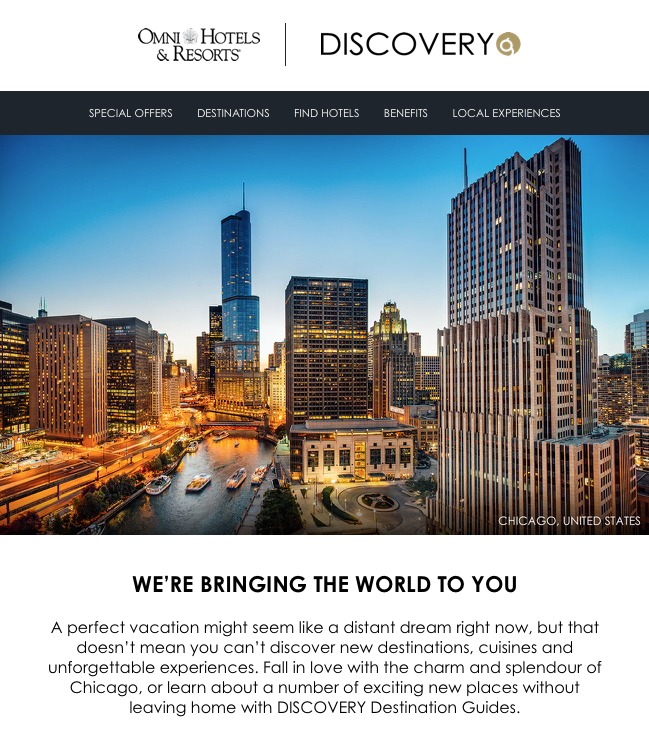Photo by Jess Bailey on Unsplash
The Covid-19 pandemic has disrupted people’s daily routines. Want to grab that favorite cup of coffee down the street? Sorry, the coffee shop is closed. Spaghetti and meatball night? Too bad, the local store ran out of ground beef. Client meeting at the office? Nope, Zoom meeting with surprise appearance of adorable kids or pets is the way to go now.
In these and many other areas of life, the well-rehearsed habits people had from the “old” days are suddenly thrust into the spotlight of their consciousness. As a result, old habits are breaking, and in their place new habits sprout. These transformations in habits have significant consequences for business. Some brands are being left behind from broken old habits, while others are discovering opportunities among the new habits. Overall, businesses that understand this habit transformation process about their customers will be better prepared to transition through the pandemic and beyond.
This article looks into psychology research to shed light on the habit transformation process and discusses how customer relationship management should respond to such disruptions.
When and Why Do Habits Break?
To understand why habits break, let’s first take a quick look at what habit is. In psychology, a habit evolves from an action that a person frequently repeats under stable circumstances. With enough repetition and stability, the action becomes an automatic habit that is triggered by contextual cues and can be carried out with minimal thinking.
Consider an illustrative example of someone with the habit of grabbing a cup of joe at the corner coffee shop on the way to work in the morning. We will call her Jennifer. The first time it happened, Jennifer happened to notice the coffee shop, and she desperately needed an energy boost for the long day ahead. The coffee tasted decent or maybe even great. So she decided to go again the next day, and again the day after. Over time, it became a part of Jennifer’s morning going-to-work routine. She does it every workday morning without really thinking about it any more. It has become a habit.
What makes these automated habits break? There are at least three common reasons.
1. Disappearing or Changing Triggers
A habit is usually associated with one or more of the following four types of contextual cues:
- Time cue: time of the day, day of the week, etc.;
- Location cue: where you are;
- Social cue: who you are with;
- Event cue: what happens immediately before or after.
For Jennifer’s morning coffee habit, it was tied to three cues: time cue (morning), location cue (around the corner), and event cue (work right after). Suppose because of Covid-19, Jennifer is now working remotely from home instead of going to the office everyday. The changing work situation took away the location cue. The time cue may change too if Jennifer starts to get up later in the morning because there is no need for a long commute. Since the location and time cues are strong triggers of Jennifer’s morning coffee habit, the habit is likely to break now because the triggers are no longer there or have changed.
2. Rude Awakening
“Oh no, the coffee shop is closed!” Sometimes a habit can also screech to a halt when it is simply not possible to engage in the action dictated by the habit any more. For example, the closure of coffee shops and restaurants around the country has disrupted many people’s caffeine consumption or dining out habits. The empty shelves at the grocery stores may also force consumers who had habitually bought brand A to now relearn the available options and go through a more deliberate choice process again.
3. Think Habit Away
Because habit uses an automatic triggering process, making someone consciously think about the habitual action can cause a habit to break down. For example, an article Jennifer read may make her question how much coffee she should drink in a day. As another example, a competing brand may be offering a substantial discount. It may give your customers pause and make them question why they chose your product instead of the competitor’s. That questioning brings the automatic process to a conscious level, which may stop the automatic habit triggering from happening.
A simple analogy of this is driving. Drivers usually don’t need to think about where the gas pedal is or what to do if a red light is ahead. But if you were to ask a driver to try to think about the steps it takes to drive a car, the previously effortless actions would become more difficult to do.
This tendency to “think habit away” has been found in cross-selling promotions. A research study showed that when a store tried to cross-sell to its customers with a one-shot marketing campaign, it broke the habit of previously habitual buyers.
What Happens After Habits Break?
When a habit breaks, people may deal with it in different ways.
One route people may take is to retake over the habitual behavior with intentional control. In other words, rather than being guided automatically by contextual triggers, people now make decisions and choices based on whatever their intention may be at the present. For example, instead of habitually buying the same brand of cereal, consumers may start to look at nutrition label again and choose the best health/taste balance. Or the more economically conscious consumers may follow a new rule of buying whatever is on sale or buying store brands whenever possible. Decision rules and preferences are prominent in consumer choice under this route.
A second possible route is to develop a new habit to replace the old one. Habits are efficient ways of dealing with a stressful world, since they require little effort and help simplify decision making. When an old habit breaks, people may gravitate towards a new one so that they can go on autopilot again. We have seen these new behavioral patterns emerge since the beginning of the pandemic. Weekly grocery shopping trips are replaced by Instacart orders and HelloFresh deliveries; dining out on the weekends has traded places with DoorDash and UberEats; and gym workouts are now done with at-home exercise gears. According to Adobe Analytics, the online sales of these gears jumped 535% from February to March of this year, compared with a 70% increase during the same period last year.
Is it also possible that people will go back to their old habit, especially after the pandemic shutdown is over? That is certainly possible. But it will require the right set of conditions to happen. First and foremost, to recover old habits, the same contextual cues need to be restored. This means ideally the consumers’ environment should be returned to a pre-pandemic normal state. But that expectation is unrealistic. So how much the “new normal” will look like the “old normal” and how quickly things can stabilize will affect how much we will see old habits return.
Another factor that will help bring back an old habit is a consistent goal before vs. after. For example, although people may not be able to work out at their regular gym during the shutdown, those keen on staying healthy will pick up working out at the gym again afterwards. With their goal of staying in shape, they will be driven to repeat the gym routine and become habitual gym goers again. The challenge here is that the pandemic has prompted many people to re-examine their life’s priorities. So the domains relatively unaffected by the wave of soul-searching will be more likely to see old habits return.
Strategies for Customer Relationship Management
What do all of these mean for a business? In this last section, we offer some advice for managing customer relationship around the current habit transformation.
Assess the Impact on Customer Habit
Four critical questions to ask here:
- How much is the purchase and consumption of your product/service driven by habit? If your products or services are low-involvement and are used frequently, habit is likely to be a strong consideration.
- What contextual cues are relevant to your customers’ habit? If you have captured previous customer purchase or interaction data, deep analytics may help uncover these cues.
- Which of these contextual cues have changed because of Covid-19, and what will remain changed even after? The more your contextual cues have changed, the more likely your customers’ habits will also change.
- How much has your customers’ habit strength actually changed? Pay close attention to the stability of your customers’ behaviors. Are they buying around the same time? Are they using the same devices? Change in stability is a telltale sign that your customers’ habit is shifting.
Focus on Top of Mind
If your business happens to be more severely affected by the current habit disruption, it is important to keep your name salient in consumers’ mind. Many of your previously habitual customers had developed habits around your product because they initially liked it. With the habits broken and choices subject to a more conscious decision-making process, it is high time to build brand equity and connection with the brand. Can’t open your restaurant? Send at-home cooking tips and recipes to your customers. Customers not traveling? Bring the world to them, like what Omni Hotels’ & Resorts’ Discovery Loyalty Program is doing with their destination guides. A number of museums have also turned to virtual tours and educational materials to keep people connected. So even if the door of your business is closed at the moment, keep communicating with your customers, and keep them engaged through social media, emails, and other online tools.

Habit-Friendly Marketing Design
If building new customer habit is your objective, keep in mind the two conditions for habit development: high-frequency repetition and stable contexts. Build repetition into your marketing tactics by encouraging multiple episodes of the same behavior (e.g., do this x times and you will get this). If you already have a loyalty program, it can serve as the perfect channel for encouraging repetition.
Be aware also that the Covid-19 situation is far from being clear at the moment, despite plans to reopen being worked out. Without a clear stable context, it will be challenging to build long-lasting habits. When designing the contextual cues for new customer habits, focus on cues that are likely to remain stable across different possible scenarios. For example, with the length of the current shutdown uncertain and the possibility of second-wave shutdowns, location cues are likely to be a moving target. Reduce the weight of location cues in your behavioral design. Alternatively, if you associate the new habit with people’s home, try to pair it with a time cue when people will likely be home, shutdown or not.
In conclusion, the Covid-19 epidemic has brought massive disruptions in people’s daily habits. It is important that you assess the impact of these habit disrupters on your business, remain engaged with your customers during this time, and consciously design habit-friendly processes into your marketing tactics.
Note: This article was previously published on Medium.com by Loyalty Science Lab.
